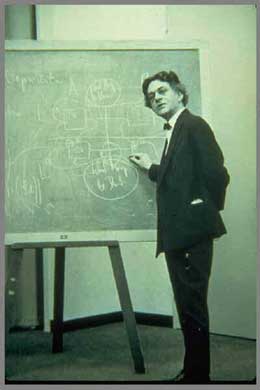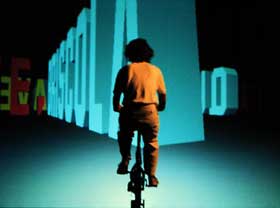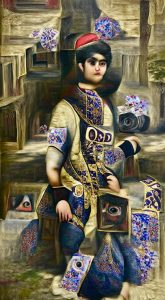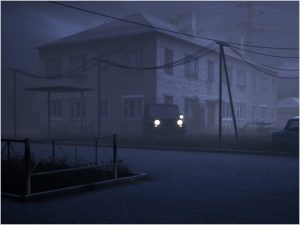Game, Set and Match II in Delft.
My notes from Usman Haque‘s talk about Paskian Environments. Actually he made the talk together with Paul Pangaro who is at the other end of the world of the moment but Haque showed a video in which Pangaro explained what Paskian Environments are.
One of the project Haque wants to apply the theories and experiments of Gordon Pask in an architectural context.

When Pask died in 1996, he was way ahead of his time. Today we have a body of knowledge that prepares us better for his ideas. Pask is best known for his “Conversation Theory”, which has dominated the 70s and 80s as the most coherent theory of interaction, encompassing human-to-human, human-to-computer, and computer-to-computer configurations in a common framework. In the late 80s, things started to take a wrong turn.
Haque made my day when he explained what for him is authentic interaction.
Interaction is much more complex than reaction. Interaction is a label often incorrectly applied, by using it so much we’re hindering real explorations of interaction.
Example: Jeffrey Shaw‘s Legible City, 1989, is one of the dominant models of interaction art. It has been replicated because it’s quite easy: i cycle and i get something in exchange. But it’s only a fixed set of information. It’s not an interactive work, it’s only a reactive one. Some information is concealed and it is progressively uncovered. The human is at the mercy of the machine and its inherent logical system.

Cybernetics is, in the Paskian sense, the study of communication between men, animals and machines. His own theory is known as “second-order” cybernetics: frameworks that don’t just account for control and feedback toward the achievement of goals, but also account for “observers” and “participants” in such systems.
Both a scientist and theatre writer/producer, he build, in the 1950s, the Musicolour Machine (couldn’t find any image online, my snapshot can only give a poor idea of what it was like), was a light show that responded to sound. The machine had a “sense of boredom”. When it was “bored” it didn’t react to the musician’s cues. The musician had to change his composition to see if and how the system would respond. Unlike in projects like Legible City, Pask’s system have the human and the machine generating something together.
Example of the thermostat. The heater at home is quite simple: you switch it on and the temperature goes up. Add a thermostat to determine when the temperature has to be lowered or risen. Make it more complex and connect it to the air conditionner. Added complexity when the temperature outside is another element (if it’s freezing outside, the dweller will need more heat to get a trully cosy feeling). You could add other elements: the weather forecast, the colour of your clothing (there are some warm and some cold colours), the impact of your heating system on the environment, the price of the barrel of oil on the stockmarket, etc. At the end, the person who set the temperature in the first place has become a very secondary element, he or she is almost negligeable. That’s the problem with the so called ubiquitous computing.
Pask has a way out of this: he wants a conversation between us and the machines and see what it mean to agree with a machine.
In the Paskian model of interaction, “machine” and “human” are peers in a conversation and where information is genuinely created through their interactions.
Haque hopes to implement the Paskian model on a large building in London. The semi-transparent facade would come alive with people. It would be a participative environement in which human and machines work as peers and we would see what would emerge from that dialogue. It would be a true conversation, with unexpected results, multiple layers. We won’t talk about “users” anymore but about “designers”: the human would not merely use and react to something but will be part and parcel of the whole process, he or she will co-design with the system.







